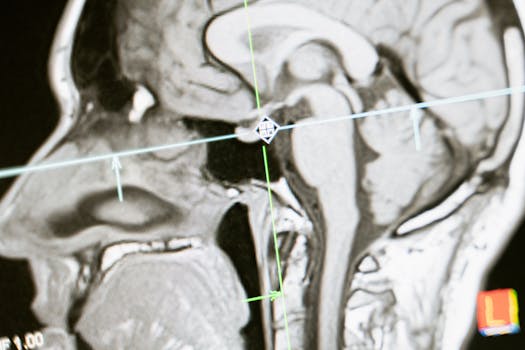What is functional mri?

What is Functional MRI?
Functional MRI, commonly known as fMRI, is a revolutionary imaging technique that has transformed our understanding of the brain. Unlike traditional MRI, which provides detailed images of brain structures, fMRI captures real-time brain activity by measuring changes in blood flow. This method not only aids in medical diagnostics but also enhances our comprehension of complex brain functions. By examining how different regions of the brain respond during various tasks, fMRI has become an essential tool in both clinical settings and research environments.
Understanding Functional MRI
Functional MRI operates on a fundamental principle: the brain’s activity requires oxygen. When specific areas of the brain are active, they consume more oxygen, leading to an increase in blood flow to those regions. fMRI takes advantage of this phenomenon to create dynamic images that reflect real-time brain activity.
Principles of fMRI
The core of fMRI’s functionality lies in the Blood Oxygen Level Dependent (BOLD) signal. This signal indicates variations in blood oxygenation levels, allowing researchers to identify active brain areas. When neurons in a specific part of the brain fire, they require more oxygen, causing an increase in blood flow. By analyzing these blood flow changes, fMRI can effectively map brain activity associated with various cognitive functions.
For further insights into the BOLD signal and its significance, you can explore more on Functional MRI of the Brain.
Comparison with Traditional MRI
Traditional MRI focuses primarily on providing detailed structural images of the brain, such as detecting tumors or abnormalities in brain tissue. In contrast, fMRI emphasizes brain function, allowing scientists and clinicians to observe how different brain regions engage during specific tasks. While both techniques are valuable, they serve distinctly different purposes in the realm of neuroscience and medicine.
Applications of Functional MRI
The applications of functional MRI extend across numerous fields, from clinical diagnostics to groundbreaking research in cognitive neuroscience.
Clinical Applications
In clinical settings, fMRI is primarily used for presurgical planning. Neurosurgeons utilize fMRI to identify critical brain areas associated with essential functions, such as motor skills and speech. This information helps them avoid damaging these regions during surgery, thereby minimizing potential complications.
Additionally, fMRI plays a significant role in diagnosing and monitoring various mental health disorders, including depression, anxiety, and schizophrenia. Researchers examine brain activity patterns to better understand these conditions, leading to improved therapeutic interventions.
For a deeper understanding of fMRI’s clinical applications, check out this resource on Clinical Applications and Future Directions of Functional MRI.
Research Applications
Functional MRI is pivotal in cognitive neuroscience, where it helps researchers explore how the brain functions during tasks such as memory retrieval, decision-making, and emotional responses. By observing brain activity in real-time, scientists can unravel the intricate networks involved in complex cognitive processes.
Moreover, fMRI is instrumental in studying the effects of neurological diseases, such as Alzheimer’s and Parkinson’s. By analyzing changes in brain activity, researchers can gain insights into the progression of these disorders and develop potential treatment options. For a comprehensive look at fMRI’s role in neuroscience, refer to Neuroscience Applications of Functional MRI.
Limitations and Challenges of Functional MRI
Despite its advantages, functional MRI is not without limitations and challenges.
Technical Limitations
One significant challenge with fMRI is the presence of motion artifacts. Even small movements during a scan can distort the images and lead to inaccurate results. This issue necessitates the use of specialized techniques to minimize motion, especially in studies involving patients who may have difficulty remaining still.
Moreover, fMRI has limitations regarding spatial resolution. While it can measure brain activity with good temporal resolution, distinguishing activity at a very fine spatial level remains challenging. As a result, interpreting the exact location of brain functions can sometimes be ambiguous.
Interpretation of Results
Interpreting fMRI data is complex. The relationship between blood flow and neural activity is not always straightforward. Factors such as individual variability in brain anatomy and function can influence results, making it essential for researchers to approach findings with caution. Understanding these intricacies is crucial for advancing the field and deriving meaningful conclusions from fMRI studies.
Future Trends in Functional MRI
As technology advances, the future of functional MRI looks promising.
Advancements in Technology
Emerging technologies are set to enhance fMRI capabilities. Innovations such as higher magnetic field strengths and improved image acquisition techniques are expected to improve both the spatial and temporal resolution of fMRI scans. These advancements will allow researchers to capture more detailed and accurate representations of brain activity.
Potential Research Breakthroughs
The potential for research breakthroughs using fMRI is vast. Areas such as neurofeedback and brain-computer interfaces could benefit significantly from improved fMRI methods. By enabling individuals to gain real-time insights into their brain activity, these tools could revolutionize mental health treatments and cognitive enhancement strategies.
Conclusion
Functional MRI stands at the forefront of neuroscience, offering unparalleled insights into the workings of the human brain. By measuring blood flow changes associated with neural activity, fMRI has become a vital tool in both clinical and research settings. Despite its limitations, ongoing advancements in technology and methodology promise to unlock even more potential in understanding brain function. As we continue to explore this fascinating field, the future of functional MRI holds exciting possibilities for both medical science and our comprehension of the brain’s complexity.